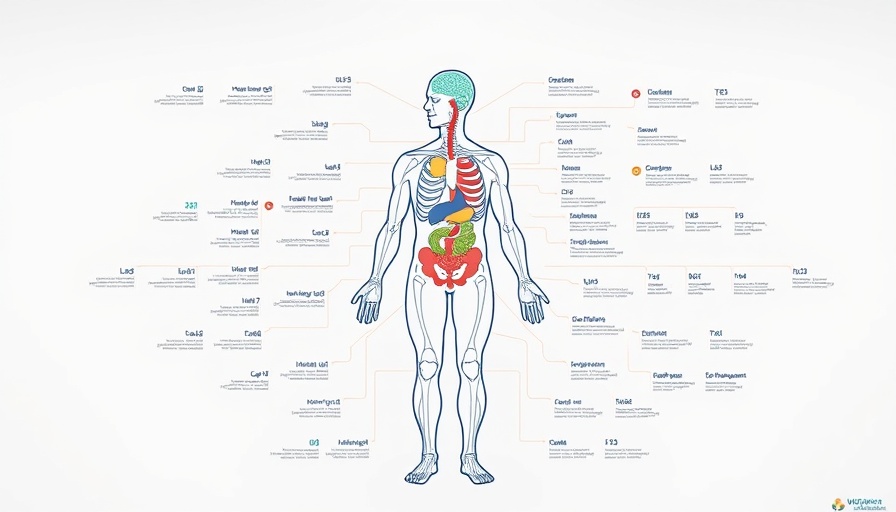
Understanding the Need for Climate Safe Rooms
As our planet faces unprecedented climate challenges—rising temperatures, severe storms, and unpredictable weather patterns—the notion of a 'climate safe room' becomes increasingly vital. These designated spaces provide sanctuary during climate emergencies, embodying safety, preparedness, and resilience. But why should every household consider creating one, and how does this connect to broader health and wellness themes?
What Is a Climate Safe Room?
A climate safe room is a fortified area in your home designed to offer protection against extreme weather events such as hurricanes, floods, and heat waves. Equipped with essential supplies, technology, and ventilation systems, these rooms can serve as a refuge, ensuring that you and your family remain safe and comfortable during crises.
The Intersection of Climate Safety and Health
In addition to physical safety, the creation of climate safe rooms aligns with optimal health and wellness. Stress and anxiety can surge during natural disasters, affecting mental and physical health, particularly among vulnerable populations. A climate safe room can provide a sense of security, thus positively influencing overall well-being. This is especially relevant in communities where access to health and wellness resources may be limited.
How to Create Your Climate Safe Room
Creating a climate safe room doesn’t have to be a daunting task. Here are essential steps you can take to establish your sanctuary:
- Select the Location: Choose an interior room with no windows, ideally on the lower floors of your home.
- Prepare Emergency Supplies: Stock your room with non-perishable food, water, first aid kits, flashlights, batteries, and any personal medications.
- Install Communication Devices: Ensure you have a reliable communication system, such as a battery-operated radio or satellite phone, to stay updated on weather alerts.
- Ventilation and Air Quality: Consider how to manage indoor air quality during extreme conditions, possibly including air filters to remove contaminants.
These steps not only enhance physical safety but also promote a mindful approach to health and wellness, recognizing the psychological effects of climate-related stress.
Community Health and Wellness Initiatives
In cities like San Antonio, initiatives focused on health and wellness are essential for building community resilience against climate change. Community health organizations can facilitate workshops on creating climate safe spaces, integrating climate education into wellness programs, and promoting resources like food security and mental health support. As communities become more informed about the physical and psychological impacts of climate change, they can cultivate a culture of preparedness.
Local vs. Global Perspectives on Climate Preparedness
While climate change is a global issue, its impacts are profoundly local. For instance, coastal areas may need stronger storm-proofing strategies, while those in desert regions might focus on heat resistance. Understanding these local dynamics will improve community-centric solutions, reinforcing the idea that everyone has a stake in climate adaptability.
Variations in Climate Safe Rooms Across Different Regions
Creating a climate safe room will vary significantly based on geographic location. In flood-prone areas, waterproofing and elevation are critical; in high-risk tornado zones, robust structural integrity is essential. Therefore, each community must tailor these safe rooms to their specific environmental threats.
What Can You Do Now?
Emphasizing both safety and health, the creation of climate safe rooms is an essential step for modern households. Beyond preparation, embracing this concept leads to greater awareness regarding overall health and wellness prepared strategies for extreme weather. As engaged citizens, local wellness businesses can further this conversation, leading to workshops and community events that draw attention to both climate and health preparedness.
The Future: A Healthier Community Through Preparedness
Prioritizing climate preparedness is not merely a protective measure; it’s a pathway to enhanced community health. The more we prepare for climate impacts, the healthier and more resilient our communities will become. By fostering connections among neighbors and businesses, we can cultivate a culture of care and responsibility, ensuring our well-being in face of adversity.
Conclusion: Taking Action for a Safer Future
In concluding, I urge you to consider your own climate safe room. Whether you take immediate action or begin planning for the future, every step counts towards safeguarding your health and wellness in an unpredictable climate. For more information on community health and wellness strategies and events, explore local resources and engage with community initiatives to contribute effectively to collective resilience.
 Add Element
Add Element  Add Row
Add Row 



Write A Comment